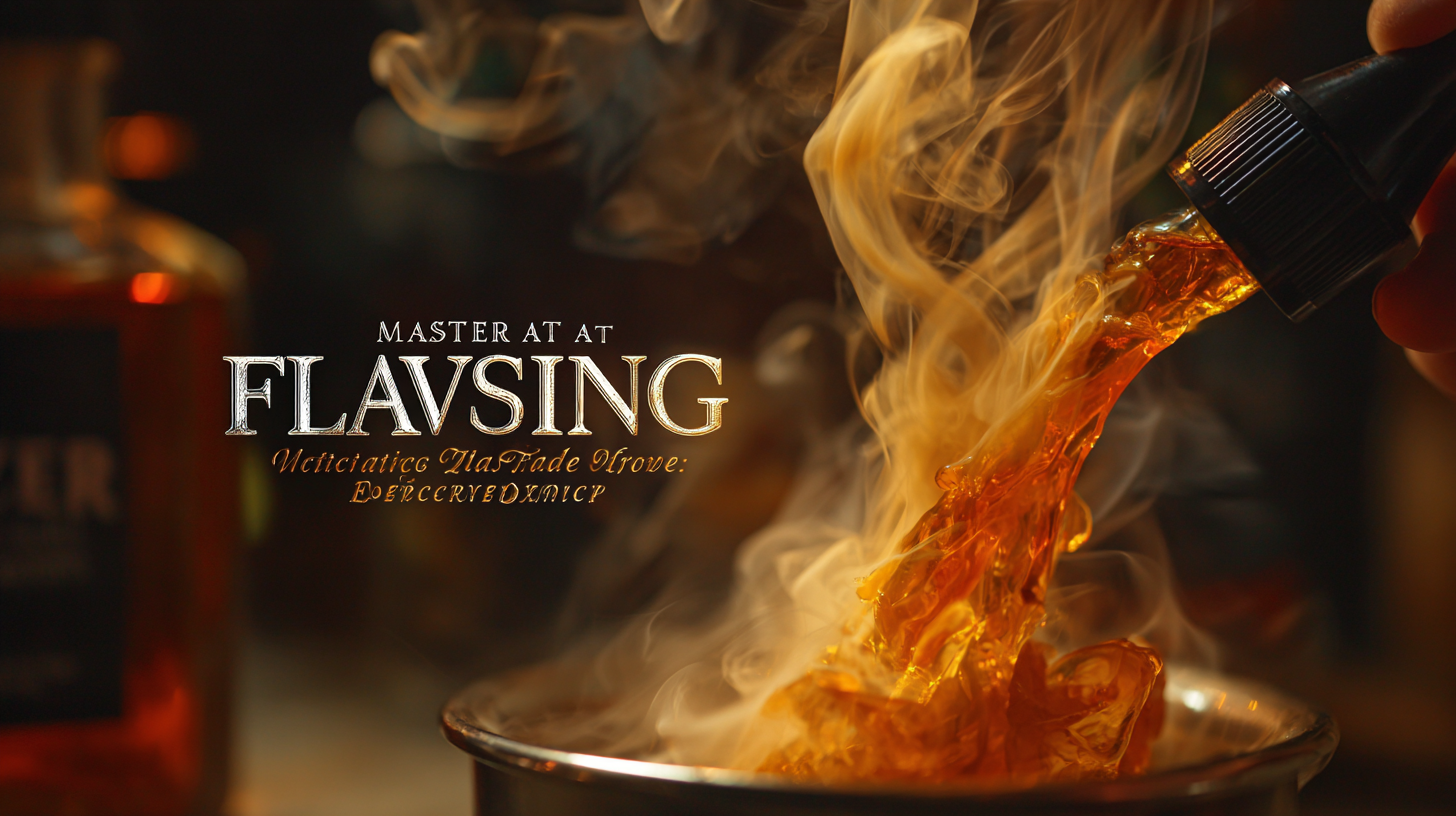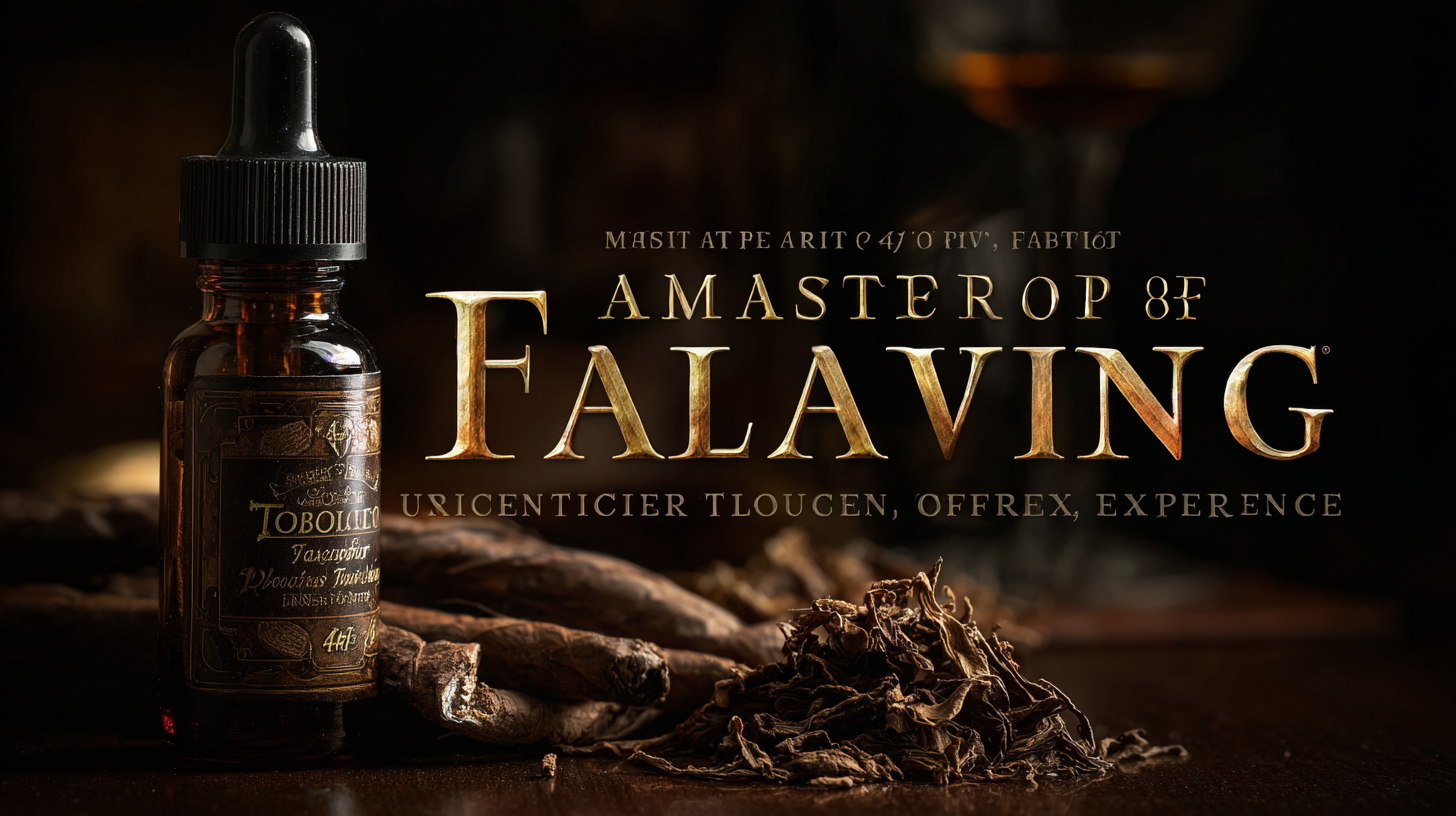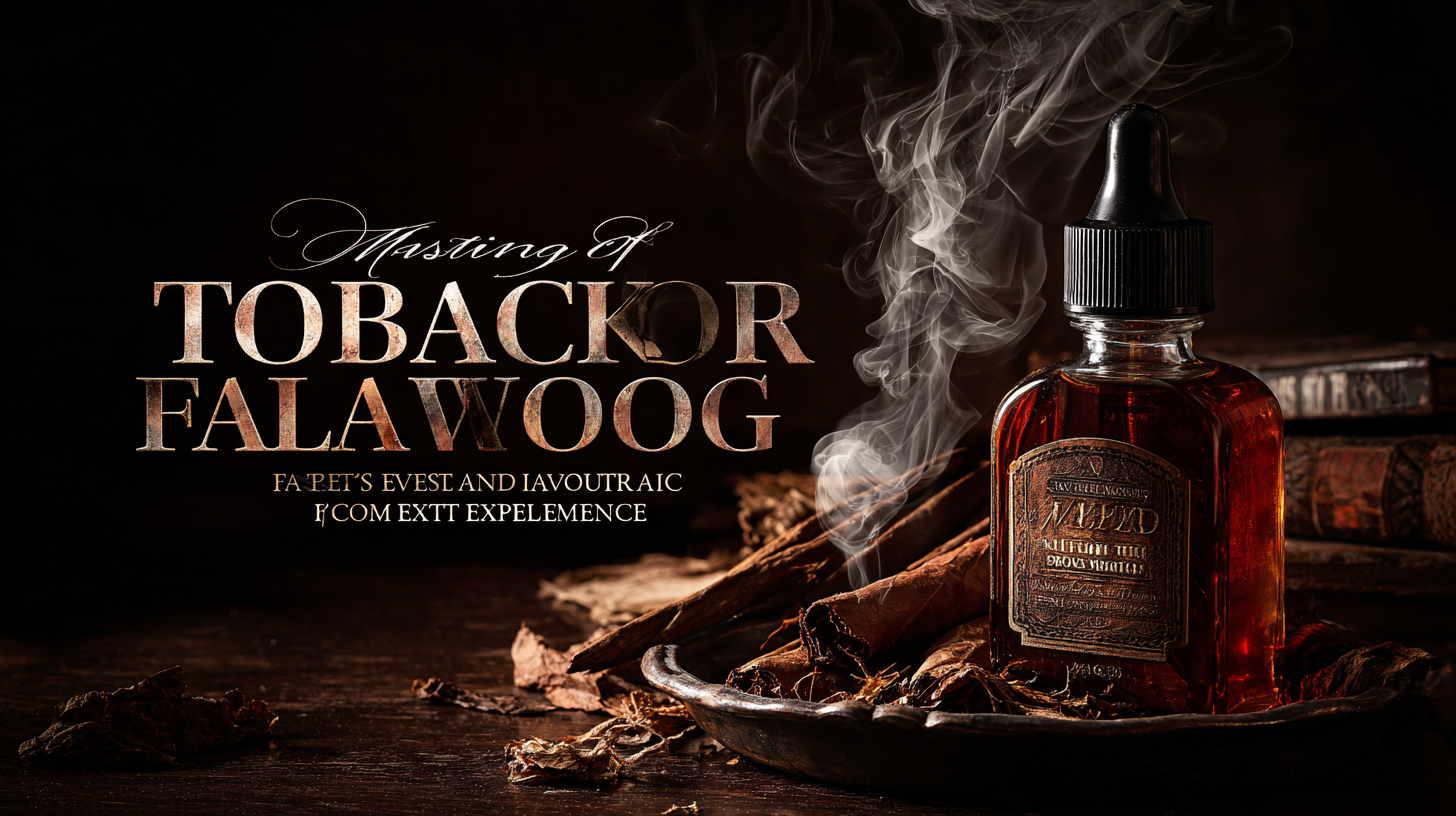In the ever-evolving landscape of vaping, the demand for Tobacco Flavor E-Liquid has surged, reflecting a significant shift in consumer preferences. According to a recent report by Grand View Research, the global e-liquid market is expected to reach $34.2 billion by 2025, with tobacco flavors comprising a notable segment of this growth. Vapers today are not just seeking nicotine delivery; they are in pursuit of a rich and satisfying experience defined by unique flavor profiles.
 As brands innovate and develop complex blends, mastering the art of flavor becomes essential for enthusiasts seeking to enhance their vaping pleasure. This article will explore unique techniques and creative approaches to enhance your Tobacco Flavor E-Liquid experience, ensuring that each vape is as fulfilling and enjoyable as possible.
As brands innovate and develop complex blends, mastering the art of flavor becomes essential for enthusiasts seeking to enhance their vaping pleasure. This article will explore unique techniques and creative approaches to enhance your Tobacco Flavor E-Liquid experience, ensuring that each vape is as fulfilling and enjoyable as possible.
In the rapidly evolving global tobacco e-liquid market, understanding the essentials of export and import certification is crucial for manufacturers and distributors aiming to enter various international markets. As e-liquids gain popularity across different regions, compliance with regional regulations becomes vital. This includes adhering to specific nicotine concentration limits and labeling requirements tailored to each country's standards. With nicotine concentrations ranging from 5-20mg, manufacturers can cater to diverse consumer preferences, ensuring their products meet the expectations of new markets.

Recent developments highlight the growing interest in international markets, including areas like Iceland and the Middle East, where new e-liquid products are being introduced. By navigating the intricacies of compliance and certification, companies can effectively expand their reach. It’s essential for stakeholders to stay informed about the regulatory landscape and establish robust quality control measures to ensure product safety and consumer satisfaction. As the market continues to flourish, mastering these certification essentials will play a pivotal role in successfully launching and sustaining tobacco e-liquid products in the global arena.
The realm of tobacco e-liquids has evolved significantly with innovative flavor infusion techniques at the forefront of enhancing the vaping experience. Recent trends indicate that consumer preferences are shifting towards more complex flavor profiles, moving beyond traditional tobacco flavors to incorporate fruits, desserts, and even savory notes. According to market research, the flavored e-liquid segment is projected to account for over 70% of the global e-liquid market by 2025, highlighting the growing demand for unique and diverse flavor offerings.
One innovative technique gaining traction is the use of natural and botanical extracts to create more authentic and vibrant flavors. This approach not only enhances the overall sensory experience but also caters to the increasing consumer appetite for more organic and premium products. As manufacturers adopt these techniques, they must also ensure that their formulations comply with industry regulations while delivering consistency and quality. The introduction of portable, fruit-flavored e-cigarettes exemplifies how brands are responding to this demand, providing convenience and variety for on-the-go consumers. By continuously exploring and implementing creative flavor infusion methods, the industry is set to redefine the tobacco e-liquid landscape.
In the ever-evolving landscape of the tobacco industry, digital transformation plays a pivotal role in ensuring the authenticity of flavor in tobacco e-liquids. As consumers become more discerning, the demand for genuine flavors has skyrocketed, necessitating a tighter integration of technology within the production process. By leveraging data analytics and blockchain technologies, manufacturers can trace the origins of their flavor ingredients, providing transparency that builds trust with consumers. This commitment to authenticity not only enhances the vaping experience but also aligns with the growing trend of conscious consumerism.
Moreover, as brands innovate and experiment with unique flavor combinations, digital platforms serve as essential tools for gathering consumer feedback and preferences. The use of social media and e-commerce insights allows companies to refine their flavor offerings, making them more relevant to the evolving tastes of their audience. This real-time engagement fosters a community-oriented approach, where customers feel valued and involved in product development. Ultimately, the digital tracking of flavor authenticity not only enhances the quality of tobacco e-liquids but also creates a more immersive and satisfying experience for users, setting the stage for the future of flavor innovation in the industry.
When exploring the world of tobacco e-liquids, the combination of unique flavor profiles can greatly elevate the vaping experience. According to a 2022 report by the Tobacco Vapor Electronic Cigarette Association, over 65% of users prefer e-liquids that blend traditional tobacco flavors with various complementary notes, such as vanilla, caramel, or even mint. This innovative fusion not only caters to diverse palates but also enhances the complexity and satisfaction of each vape.
Tips for creating your unique tobacco e-liquid blend: Start by experimenting with classic tobacco flavors, such as Virginia or Cavendish, and then introduce subtle sweetness with flavorings like honey or chocolate. A dash of cinnamon can impart warmth and richness, making the overall experience more rounded and inviting.
Another recommended approach is to consider adding fruit notes, such as apple or cherry, which can provide a refreshing twist. A study by Flavorah indicated that tobacco users who combined fruit flavors with traditional tobacco experienced 30% greater satisfaction. This blend of bold and refreshing elements not only keeps the palate intrigued but also allows for creativity in your e-liquid crafting. Explore these combinations to find your perfect match, and remember to balance the intensity of flavors to achieve a harmonious mix.
The tobacco e-liquid industry faces a complex landscape of regulatory challenges that can significantly impact manufacturers. These challenges include stringent guidelines surrounding product formulation, packaging, and marketing. For instance, many regions require detailed disclosures of ingredients, aiming to enhance consumer safety but often leading to increased operational costs for manufacturers. Additionally, advertising restrictions limit how companies can promote their products, forcing them to find creative solutions to communicate with potential customers while remaining compliant.
However, amid these challenges lie opportunities for innovation and differentiation. Manufacturers can leverage regulatory hurdles to distinguish themselves by focusing on quality and transparency. By investing in research and development to create unique flavor profiles that comply with regulations, companies can attract a more discerning clientele. Furthermore, embracing sustainable practices and responsible marketing can position brands as leaders in the market, appealing to consumers who value ethical considerations alongside product quality. As the regulatory environment continues to evolve, those willing to adapt and innovate are likely to thrive in the competitive landscape of tobacco e-liquid manufacturing.

